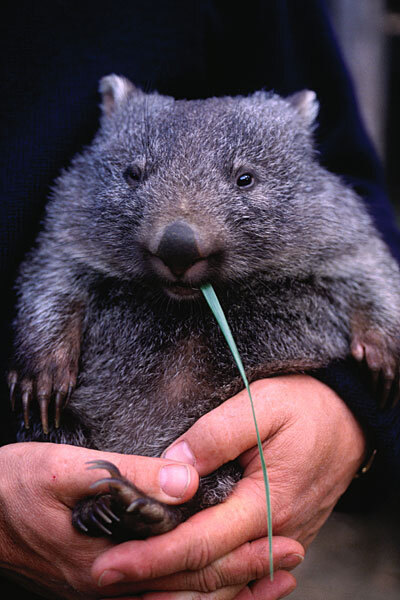Scientists unearth fossil of SUV-sized wombat
Loading...
Paleontologists digging near a remote cattle station in Queensland, Australia, have discovered a nearly complete skeleton of a humongous wombat.
Discovered near Floraville Station in northwestern Queensland, the fossil represents the most complete specimen so far discovered of a diprotodon, a three-ton marsupial that roamed the continent for about 2.5 million years until going extinct some 50,000 years ago.
"If one tried to visualize what this thing looked like you'd have to sort of think of a gigantic wombat on steroids," University of New South Wales biologist Mike Archer told the BBC.
Science has known of the existence of a prehistoric mega-wombat for a long time. The species was named in 1838 by British paleontologist Richard Owen, who also coined the word "dinosaur."
How big was it?
Up until the 21st century, most scientists estimated that the diprotodon was slightly bigger than a large cow. But in 2003, a team led by University of Sydney paleontologist Stephen Wroe recalculated the Pleistocene wombat's size, comparing specimens of the creature with those of 50 different marsupial and mammal species. Wroe's team determined that the prehistoric marsupial was actually the size of a large rhinoceros and weighed in at over 6,000 lbs.
Diprotodons grazed on huge quantities of nutrient-poor foliage, much like koalas do today.
"It was the biggest of them all," University of New South Wales paleontologist Sue Hand, who was part of the team that unearthed the wombat, told Australian Geographic. "The biggest marsupial that ever lived on any continent."
The largest marsupial alive today is the red kangaroo, which can weigh up to 200 lbs, about a 30th of the size of the gigantic ice age wombat.
Driven to extinction?
Nobody knows for sure what caused the extinction of this colossal wombat, which died off about the same time the first humans arrived in Australia, about 50,000 years ago. Theories range from climate change to bush fires to the giant wombats being hunted to extinction by humans.
In any case, Australia is undoubtedly a safer place, at least for Homo sapiens, without the hulking wombats. Modern-day wombats which weigh up to 80 pounds, have been known to occasionally maul humans.






